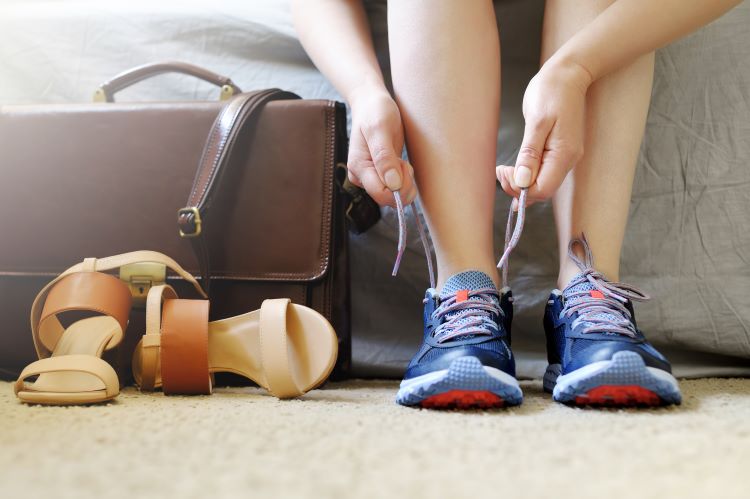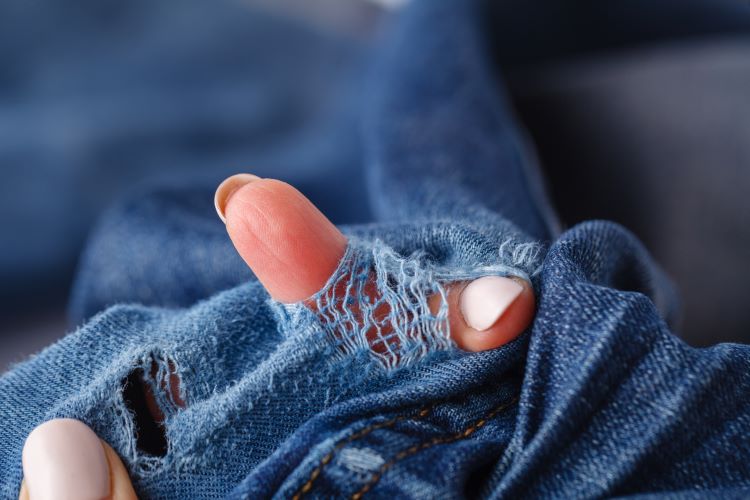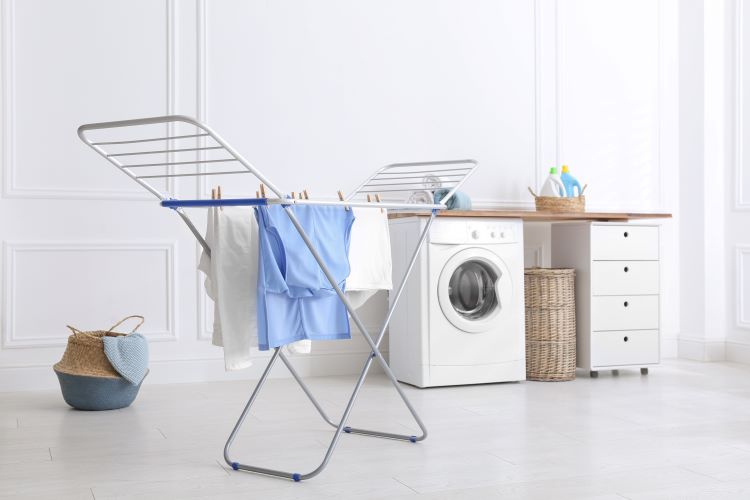How To Take Care of Your Clothes So They’ll Last

Last fall, you packed away your hot weather clothes and got out cold weather items. Now it’s time to pull out those short-sleeved shirts, shorts, and strappy dresses again. As you do so, you may notice that some items look more faded than you remember, or some have stains or tears you never took care of. Or some are just not in style anymore.
Don’t throw them away! Landfills are already brimming with cast-off clothing; in fact, a truckload of textiles ends up in a landfill every second. And unless you really, really need something, don’t rush out to buy new items, either. The clothing fashion industry is a major contributor to global pollution, second only to the oil industry, according to The United Nations. Instead of tossing clothes you no longer want, try to repair, repurpose, or recycle them, or donate them to a charity so others can wear them.
You can, however, save money and the planet by hanging onto the clothes you have and giving them a little TLC instead. Space Makers Junk Removal wants to help you do that by offering these seven tips on how to make your clothing last.
BE A SAVVY SHOPPER

Don’t rush out to buy the latest thing someone on Instagram is wearing. Chances are, that trendy, fast fashion item is just that: trendy. It’s “fast” because it’s made on the cheap and then pumped out to stores as quickly as possible. Think: fast doesn’t last.
Instead, buy well-made pieces that are classic and that will endure years of wear. Try to cultivate a personal style that allows you to wear what you like and are comfortable in, rather than trying to keep up with every trend out there. If you’re really environmentally conscious, invest in clothing made sustainably and well.
How do you know if something is made well? Look for
- tight, even stitching in seams, and no loose threads
- finished hems that are sewn evenly
- lining inside jackets, dresses, pants, and skirts
- patterns that match at the seams
CHANGE CLOTHES AS SOON AS YOU GET HOME

If you wear work attire or a uniform, change out of it as soon as you get home. It’s easy to get sucked into cooking dinner, walking a pet, or household chores right as you come in the door. Change into clothes you can get dirty and save your work attire from dirt, sweat, and stains.
INSPECT—AND ACT IMMEDIATELY—IF THERE’S A PROBLEM

Get in the habit of inspecting your clothing as you take it off. Don’t simply toss something in the laundry hamper if it has a stain or a tear. Address the problem right then, if you can. Apply a stain remover, soak an item, patch up a hole, or reattach a button as soon as you can. Don’t know how to sew? Find a YouTube video to help you out with simple sewing.
If you aren’t able to repair an item yourself, take it to someone who can repair it. A good tailor or seamstress can, for example, fix a zipper or repair a ripped-off pocket.
REWEAR TO PREVENT WEAR ON CLOTHES

Many people think they have to wash a piece of clothing after one wear. The washing and drying process is actually hard on clothes, and it costs money and energy. So unless a garment is super sweaty or dirty, try to wear it several times before washing it. You can refresh a piece of clothing between wears by
- using the “steam” setting on your dryer, if you have one
- wiping off dirt or spot-cleaning a stain
- hanging up the item to air it out
WASH CLOTHES THE CORRECT WAY

If you just toss everything into the washer at once and hope for the best, you aren’t doing your clothes a favor. Check the care labels on items to make sure you’re using the right temperature and the recommended cycle (delicate, bulky, etc.) for each of them. Here are a few other tips for preserving your clothing when washing:
- Turn clothes inside out if possible to prevent fading
- Close zippers, snaps, buttons, etc. to keep items from damaging one another or stretching out
- Empty pockets of keys, pens, tissues, notes, money, lipsticks, and any other items that can stain or damage clothing
- Pretreat clothing with stain removers if necessary
- Place delicate items in mesh lingerie bags
- Place sweaters in mesh bags to prevent stretching out
- Use cold water as often as possible to save money and energy. Cold water is less likely to shrink garments, and experts agree that cold water usually gets items just as clean as warm or hot water. Save hot water for items that need disinfecting, like underwear or sheets after someone’s been ill.
- Use the gentle cycle or a “speed” cycle instead of a full cycle on clothes that aren’t super dirty
- Don’t use fabric softener. Fabric softener actually can damage clothes over the long run, and it can seal in odors in some types of fabrics. Use ½ cup distilled white vinegar instead.
DRY CLOTHES THE RIGHT WAY

Dryers get clothes dry quickly, but they are hard on clothes and use up a lot of energy as they work. Drying clothes makes them prone to shrinking, stretching out, or pilling, too. If you need to use a dryer, don’t cram it full of clothes; you’ll get wrinkles if clothes can’t spread out. And skip the fabric softener sheets, which leave behind a chemical residue. Opt for a dryer ball instead.
If possible, air dry clothes as often as you can to cut down on fading, wear and tear, and energy use.
STORE YOUR CLOTHES THE RIGHT WAY

Storing your clothes the right way can keep them looking good for years and years.
- Fold sweaters and place them in drawers or on shelves
- Keep wood hangers on hand for heavy items like coats, jackets, and blazers
- Invest in padded hangers for delicate shirts and woven items like shawls or scarves
- Use hangers with clips so pants can hang naturally. Folding them over a hanger will crease them.
- Keep purses and expensive shoes in breathable cloth bags
- Use shapers inside shoes or stuff them with newspaper, tissue paper, or packing paper to help them keep their shape. Clean shoes before storing them.
- Make sure all items are dry, and don’t cram items together. Space them so air can circulate between items.
- Use a dehumidifier, charcoal bags, or other products to prevent moisture and mildew from forming if you have damp conditions.
CALL SPACE MAKERS TO GET RID OF CLOSET JUNK OR OLD FURNITURE
.2402211052550.jpg)
As you sort through the clothing in your closet, you may find that you have junk stored in there, too. Or you may have furniture that no longer suits your needs. We can haul off junk like boxes, totes, luggage, and other items that accumulate in your closet. We can also haul off old furniture like dressers or chests, shelving, or closet systems. Whatever is keeping you from having a clean and organized closet, we can take it away. We’re your local San Antonio junk removal experts, and we provide quick, dependable service.
CONTACT US TODAY to take away anything that’s in the way in closets—or other parts of the house.
